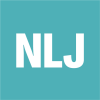The Nordic difference: Job quality in Europe 1995–2010
DOI:
https://doi.org/10.19154/njwls.v2i4.2308Keywords:
Health, working environment & wellbeing, Work/life balance, Labor market institutions & social partnersAbstract
Previous empirical research has pointed out that Nordic countries are distinguished from the rest of Europe in terms of job quality. On the other hand, it has been debated whether, in the longer run, the Nordic welfare state is able to insulate workers from globalization effects. This article investigates whether Nordic countries have retained their advantageous position concerning job quality compared with other EU countries. Empirical analyses are based on the European Working Conditions Survey collected in 1995, 2000, 2005, and 2010. We use data on employees in the 15 member states of the EU prior to enlargement in 2004 (n = 61,457). The results partly confirm previous findings of high job quality in the Nordic countries. However, there are clear differences between Nordic countries. To be precise, Denmark stands out from the rest of Europe and other Nordic countries with its higher level of job quality.Downloads
Published
How to Cite
Issue
Section
License
The Copyright Holder of this Journal is the authors and the Journal. Normally the journal use the CC-BY NC-ND 4.0 licence.
Exceptions to the license terms may be granted
If you want to use content in the Journal in another way then described by this license, you must contact the licensor and ask for permission. Contact Annica Asp at annica.asp@kau.se. Exceptions are always given for specific purposes and specific content only.
Sherpa/Romeo
The Journal is listed as a blue journal in Sherpa/Romeo, meaning that the author can archive post-print ((ie final draft post-refereeing) and author can archive publisher's version/PDF.
Copyright of others
Authors are responsible for obtaining permission from copyright holders for reproducing any illustrations, tables, figures or lengthy quotations previously published elsewhere.
Archives policy
All published material is archived at the Danish Royal Library in conformity with the Danish rules of legal deposit.
Plagiarism screening
We do not screen articles for plagiarism. It is the responsibility of the authors to make sure they do not plagiate.



